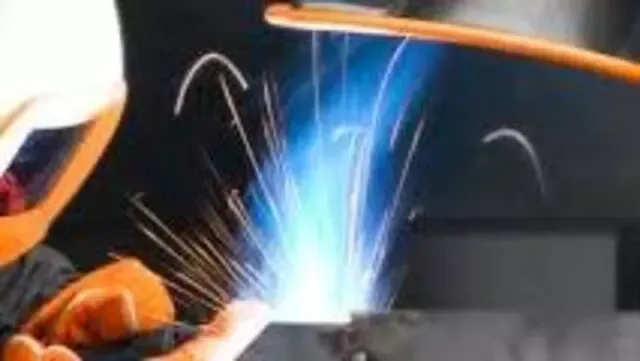Welding Energy: Powering the Fusion of Precision and Efficiency
In the realm of modern manufacturing and construction, welding energy stands as a vital force that drives the fusion of metals, creating structures that form the backbone of our infrastructure.
This article delves into the world of welding energy, exploring its significance, methods, and technological advancements that have propelled this essential process to new heights of precision and efficiency.
The Significance of Welding Energy
Welding energy refers to the heat that is produced during the welding process, and it holds a crucial significance in the realm of joining metals and alloys. This energy serves as the driving force to melt and fuse materials, leading to the creation of robust and dependable connections. These connections are indispensable in the construction of a wide spectrum of structures, ranging from towering skyscrapers to intricate machinery.
In welding, the precise control and utilization of this energy determine the integrity and durability of the final joint. Different welding methods, as mentioned earlier, leverage diverse sources of energy such as electrical arcs, friction, or laser beams to achieve this fusion. This energy not only facilitates the physical bonding of materials but also influences the metallurgical properties of the joint, impacting factors such as strength, corrosion resistance, and overall performance.
The significance of welding energy extends beyond mere structural connections. It influences safety and operational efficiency in various industries. Flawlessly welded components ensure the structural integrity of bridges, vehicles, pipelines, and aircraft, guarding against catastrophic failures. Additionally, the energy-efficient use of welding energy minimizes distortion, reduces material waste, and optimizes production costs, making it an essential factor in modern manufacturing processes.
In essence, welding energy is the cornerstone of the welding process, underpinning the creation of sturdy and enduring connections that shape the infrastructure and technology-driven world we live in today.
Methods of Harnessing Welding Energy
Welding is a fundamental process in manufacturing and construction industries that involves joining materials through the application of heat and pressure. Various methods have been developed to harness welding energy, each employing distinct techniques to achieve strong and reliable connections between materials.
These methods range from traditional approaches like electric arc and gas welding to advanced technologies such as laser and electron beam welding. This discussion will provide a brief overview of these diverse methods, highlighting their unique mechanisms for melting and fusing materials to create solid and enduring bonds.
1. Arc Welding
This widely used method employs an electric arc to create the heat required for melting and fusing metals. Techniques such as Shielded Metal Arc Welding (SMAW), Gas Metal Arc Welding (GMAW), and Tungsten Inert Gas (TIG) fall under this category. Each method utilizes various electrodes, gases, and electrical currents to generate the necessary welding energy.2. Resistance Welding
Resistance welding relies on the electrical resistance generated at the point of contact between two metal pieces. The resistance generates heat, causing the metals to melt and fuse together. Spot welding, seam welding, and projection welding are common techniques under this category.
3. Laser Welding
Laser welding employs a high-powered laser beam to generate the welding energy needed for fusion. This precise method offers exceptional control over heat input and is commonly used in industries where accuracy and fine detailing are paramount.
4. Ultrasonic Welding
In ultrasonic welding, high-frequency vibrations generate the welding energy required to fuse metals together. This technique is often used for joining thin sheets and plastics.
Technological Advancements in Welding Energy
The field of welding has witnessed remarkable advancements driven by technology, revolutionizing the way materials are joined together. These technological innovations have not only enhanced the efficiency and precision of welding processes but have also expanded the range of materials that can be effectively welded.
This overview explores some of the notable technological advancements in welding energy, showcasing how these developments have contributed to safer, more versatile, and higher quality welding techniques.
1. Automation and Robotics
Advances in robotics and automation have revolutionized welding processes. Robots equipped with welding tools can precisely control welding energy, resulting in consistent and accurate welds. This not only increases efficiency but also reduces human error.
2. Advanced Power Sources
The development of advanced welding power sources has enabled more precise control over welding energy. Inverter-based power sources, for instance, allow for fine-tuning of welding parameters, leading to improved quality and efficiency.
3. Energy-Efficient Techniques
With a growing focus on sustainability, energy-efficient welding techniques have gained traction. Pulsed welding and adaptive welding methods optimize energy usage, reducing waste and enhancing the overall efficiency of the welding process.
4. Non-Destructive Testing (NDT)
Non-destructive testing techniques, such as radiography and ultrasonic testing, ensure the quality of welds without causing damage to the finished product. This contributes to the reliability and longevity of welded structures.
Conclusion
Welding energy is the driving force behind the precision and efficiency of metal fusion processes that underpin modern manufacturing and construction. Through diverse methods and continuous technological advancements, the welding industry has evolved to deliver stronger, more durable, and more sustainable structures.As industries continue to embrace innovation, welding energy remains a cornerstone of progress, ensuring that the connections that bind our world together are both enduring and resilient.

